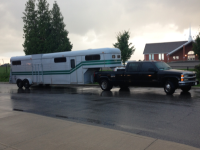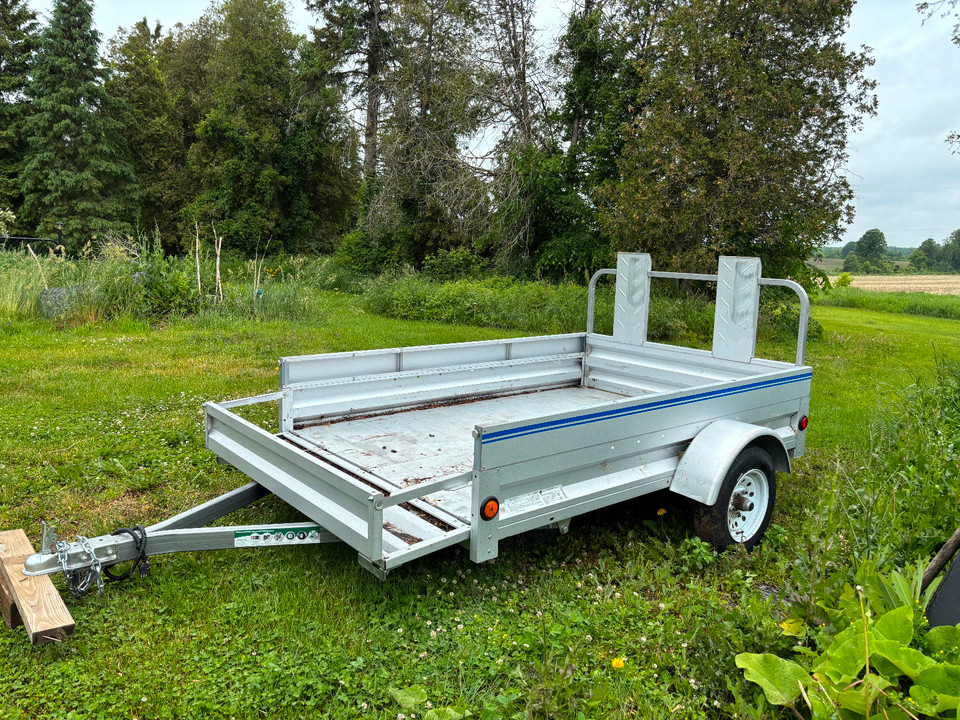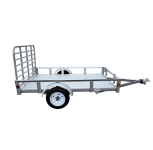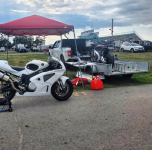The axle being close to the back of the trailer allows the weight to be more easily placed forward of the axle. This is safer to pull because if more weight is place behind the axle than in front, it will cause the trailer to fishtail. The higher the ratio of weight rear of the axle, the worse the fishtailing. the downside to this is the farther back the axle is, the more weight that's on the tongue.
The axle being back is the safest, but you have to balance that with the weight capacity of the tongue, and the amount of weight you'll topically be pulling.
110% this.
As the owner and user of a 5x7 trailer exclusively for towing my GSXR 600, I can tell you the axle on the trailer is too far back for your needs.
The Center of the mass of you bike (the engine) should be close to being over the trailer axel to balance the weight.
Only if tongue weight is a concern. You don't *need* to have the centre of mass directly over the axle otherwise, and there are actually significant handling/safety benefits by having that centre of mass
ahead of the axle if tongue weight limits allow.
You want 10-15% of the total trailer weight on the tongue.
At least, not
must to be clear. 10-15% is typically the minimum safe amount for safety, anything less and you can get into sway issues. But you can go with more without any problem so long as the tow vehicle can handle it, of course within reason of the trailer design as well - you wouldn't load a 5000# load into a trailer with a 5000# capacity and put all that weight right on the tongue as you'd likely be over stressing the frame, but a 1000# load on a trailer rated for 3000#, putting a bunch more weight further forward vs centred (or dangerously, behind the axle) is actually very beneficial.
Here's a photo of our horse trailer of many years ago, obviously axle placement is designed for a vastly different setup (gooseneck with about 30% tongue load and a dually pickup), but it goes to show you that axle configurations vary depending on application, the trailers design, and the tow vehicles capabilities.

Ultimately, I think that trailer will do perfectly fine, but take the advice of not fastening your chock until you get the placement correct. You can use a bathroom scale under the tongue to monitor tongue weight as you move the bike around on the trailer - have the trailer detached from the vehicle to ensure you get accurate weights, but keep the safety chains fastened to avoid a roll-away if the trailer gets jostled a little too much while you're moving around an unsecure bike, and chock the heck out of it as well obviously.
Get the bike
as far foward as is possible while staying under your 200# limit. Keep in mind that anything else you load on the trailer will also effect these numbers, so if you plan to add a few jerry cans of gas
behind the bike when you're towing, you can move the bike ahead a bit further to compensate for that extra weight which will then reduce tongue weight, but on the flipside if you plan to put stuff
in front of the bike, that will add tongue weight.
And ultimately, in the end, don't fret being 10-30# over your tongue weight rating, your vehicle or hitch isn't going to fall apart because of it.

 www.kijiji.ca
www.kijiji.ca























